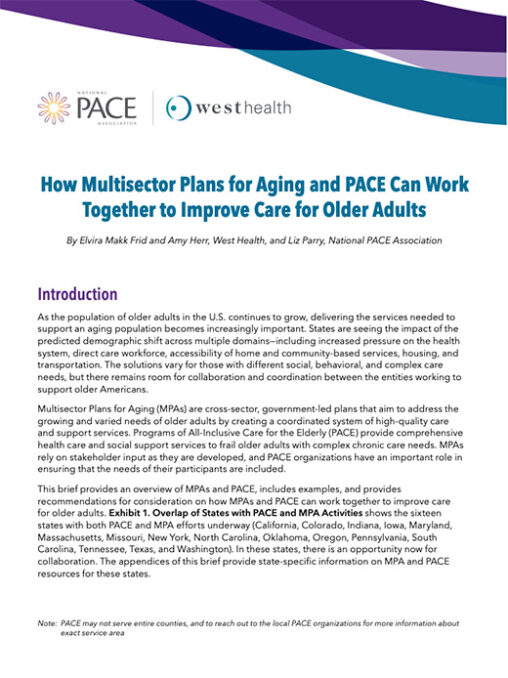How Multisector Plans for Aging and PACE Can Work Together to Improve Care for Older Adults
Introduction
As the population of older adults in the U.S. continues to grow, delivering the services needed to support an aging population becomes increasingly important. States are seeing the impact of the predicted demographic shift across multiple domains—including increased pressure on the health system, direct care workforce, accessibility of home and community-based services, housing, and transportation. The solutions vary for those with different social, behavioral, and complex care needs, but there remains room for collaboration and coordination between the entities working to support older Americans.
Multisector Plans for Aging (MPAs) are cross-sector, government-led plans that aim to address the growing and varied needs of older adults by creating a coordinated system of high-quality care and support services. Programs of All-Inclusive Care for the Elderly (PACE) provide comprehensive health care and social support services to frail older adults with complex chronic care needs. MPAs rely on stakeholder input as they are developed, and PACE organizations have an important role in ensuring that the needs of their participants are included.
This brief provides an overview of MPAs and PACE, includes examples, and provides recommendations for consideration on how MPAs and PACE can work together to improve care for older adults. Exhibit 1. Overlap of States with PACE and MPA Activities shows the sixteen states with both PACE and MPA efforts underway (California, Colorado, Indiana, Iowa, Maryland, Massachusetts, Missouri, New York, North Carolina, Oklahoma, Oregon, Pennsylvania, South Carolina, Tennessee, Texas, and Washington). In these states, there is an opportunity now for collaboration. The appendices of this brief provide state-specific information on MPA and PACE resources for these states.




